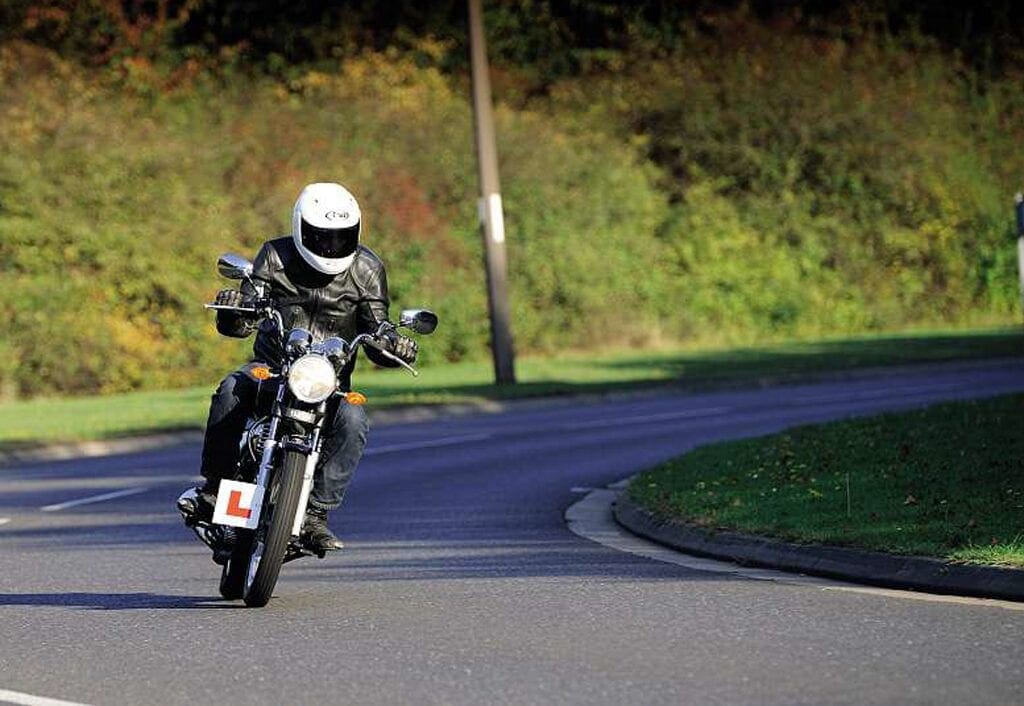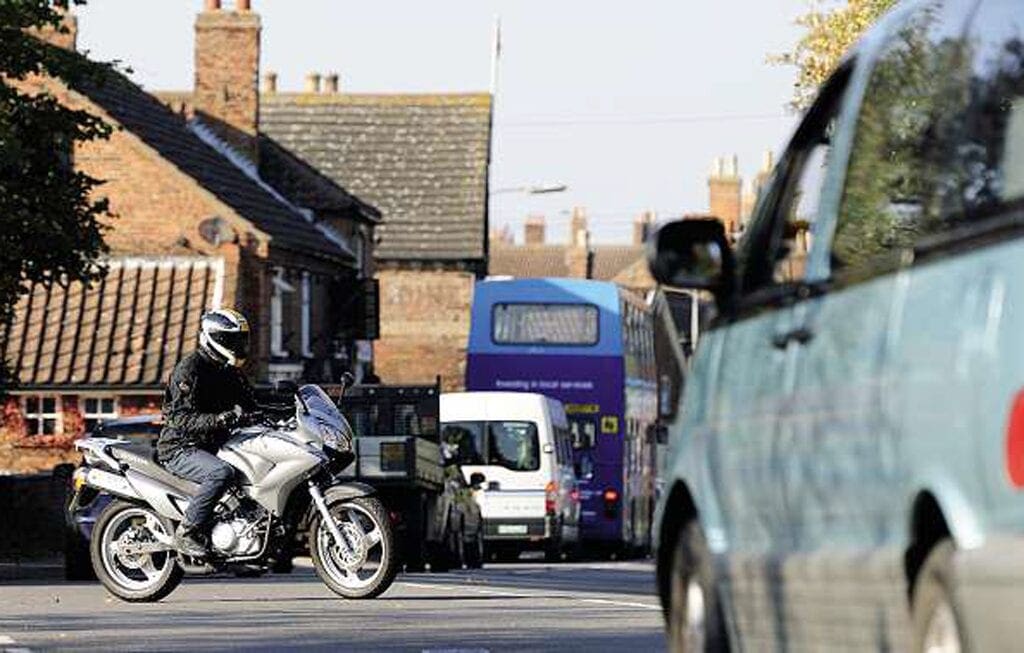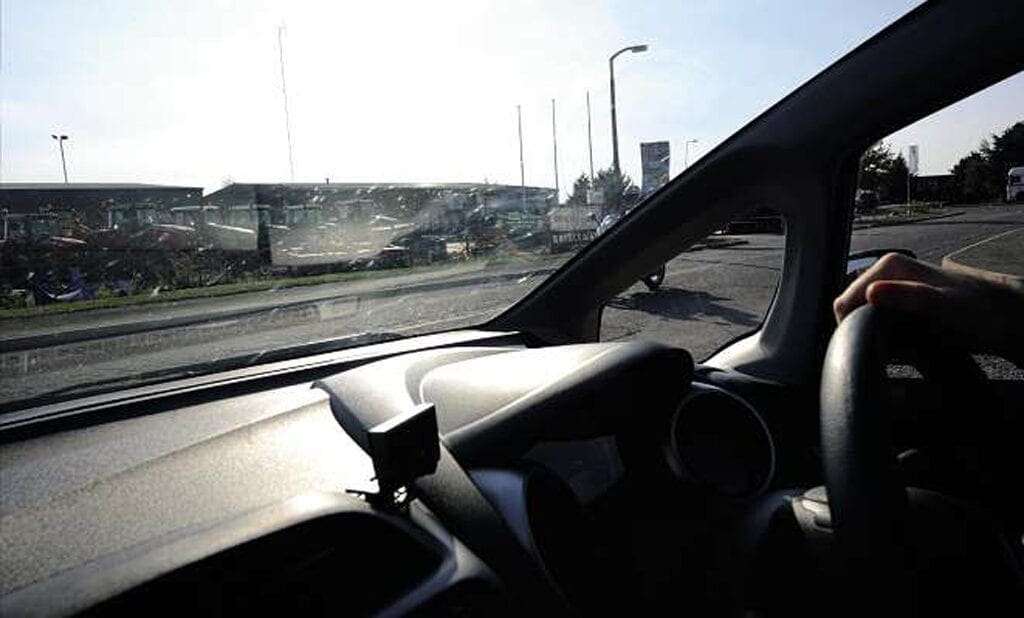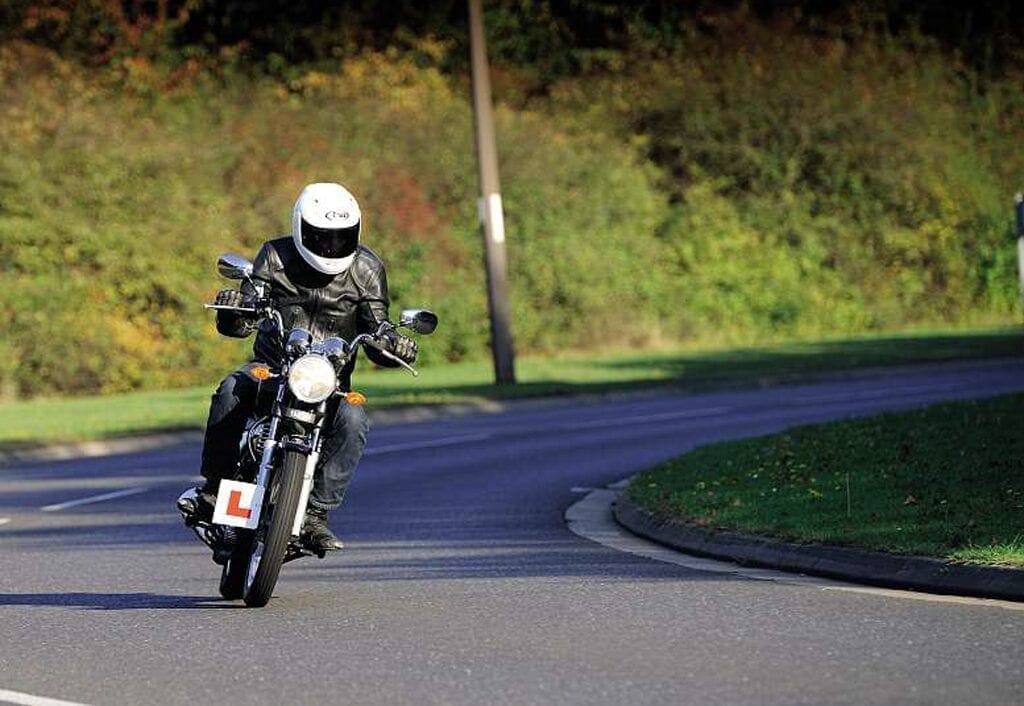
First off, there’s a couple of pre-flight checks. Check that your helmet strap is tight and remove your locks from the bike.
Now you are ready to go. Switch on the ignition and you’ll see two warning lights. The green one shows the bike is in neutral, the red one says there is no oil pressure (on a four stroke engined machine).
Open the choke (if it’s an older bike with a carburettor – fuel injected bikes don’t have them) and push the starter button with the throttle closed.
Enjoy everything More Bikes by reading monthly newspaper, Read FREE Online.
Once the engine fires, keep the throttle closed. The oil warning light should go out because there is now oil circulating around the engine. If the red light remains on (or comes on when riding) stop the engine as soon as possible and check the amount of oil in the engine – see maintenance).
Okay, so the engine’s running, the bike is in neutral and your helmet strap is tight. Lift the bike off the sidestand, flick the stand up (most bikes have a cut out the stalls the engine if you put it into gear with the stand down) and pull in the clutch.
Nervous? There’s no need. Just make sure that there’s a long straight road ahead of you with no traffic. With the clutch pulled in, tap the gear lever down one notch into first gear.
Now increase the engine revs by 1000rpm by turning the throttle gently and as you do this release the clutch lever a little.
As you do this you’ll find the clutch’s biting point. This is where the clutch starts to allow the engine power through to the wheel.
As the clutch bites, you’ll feel the bike start to edge forward. Keeping the engine at around 2000rpm, gently release the clutch and at the same time open the throttle a little more, but not too fast. Congratulations, you are riding a motorcycle.
Coming to a halt
So, you’ve read the panel above and are now riding a bike (not at the same time – the wind will blow the pages over). Well done.
Now it’s time to brake. To stop the bike, gently apply both brakes, pull in the clutch lever and come back to a halt.
When you get more confident, you can leave the clutch alone till you’re almost stationary, but for now, it’s fine to use the clutch.
Changing gear
Modern motorcycle gearboxes are simple. First is down and the rest are up. Once you’re happy with first gear, try getting second by hooking your foot under the gear lever and lifting it up a notch.
Remember that in between first and second gear is neutral so you’ll need a positive foot to get through to second.
Once in second, the rest should snick in easily. Make your changes smoother by shutting the throttle as you pull in the clutch and toe the lever. This takes the load off the engine and makes the new gear slot in more smoothly.
When coming down the gears, blip the throttle as you pull in the clutch. This also makes the downshifts smoother.
Use of gears
Most bikes (and cars for that matter) have a part of the engine’s rev range where they operate most efficiently. And you should use the gears to keep the engine in that zone for as much of the time as possible.
Once you get familiar with the machine you’ll instinctively feel where this region is, but generally, it is somewhere around halfway through the rev range upwards to within 1000rpm of the red line.
Don’t be afraid to use all the gears. The aim is to always have clean, crisp acceleration should you need it. Riding your bike like this also gives the best fuel economy.
It’s fine to cruise along in a high gear at low revs, but as you approach a junction or car to overtake, change down in plenty of time – don’t just go down five gears in the last 50 yards on the approach to a T-junction.
Likewise, when approaching a corner, change down in plenty of time, which allows the bike to settle allowing you a smooth run through the turn. Changing gear while leant over can unsettle the bike.

Steering
Sounds simple, but this is the part of motorcycle riding that most people have trouble with. There are three things you need to know. How to make a bike turn, when to do it and how to get it back up again. And none of them are as straightforward as you might imagine.
Steering a bike at walking pace is like steering a bicycle. Turn the bars left to go left and right to go right. Easy huh?
Once speeds rise above around 10mph, this changes. Try turning the bars left at 30mph and the bike will go right. This is because at these speeds the gyroscopic motion that keeps a bike upright becomes a very strong force.
Turn the bars to the left and rather than turn left, the bike actually tries to carry straight on. But because the bars aren’t straight it can’t do this and actually rolls around onto the right-hand side of the front tyre, which makes it lean to the right.
This is called counter-steering and once you are familiar with it, you can turn a bike very quickly at all speeds with confidence. Practice it in a straight line – just give the right-hand bar a quick nudge (wheel goes left) and feel the bike lean to the right.
Moving your bodyweight to the side of the bike also helps make the bike turn in that direction because as you move, you naturally push on the inside bar – you are counter-steering without realising it.
Hazards
Motorcycling is dangerous, apparently. I’ve heard it all my life, you’re probably hearing it now from everyone you talk to.
Truth is that motorcycling is relatively safe compared with horse riding, fishing or skiing, it’s just that few people ride a horse or ski to work. And it’s the other road users who really make motorcycling dangerous.
Two-thirds of bike accidents involve another vehicle and many of the remainders involve losing control on some kind of hazard such as spilt diesel.
In order to make motorcycling safe, every rider needs to be aware of and constantly looking out for hazards.
And hazard number one is a car that hasn’t seen you. It might be at a junction or as you overtake it. It could be pulling out of a driveway or overtaking oncoming traffic. Whatever the scenario you need to have seen it and worked out what’s going to happen next.
Now, the idea of doing that for every car you encounter sounds mind-boggling, but the reality is that these decisions become second nature.
It’s the minute you stop concentrating and constantly assessing the traffic that you become vulnerable and the biggest problem as a new rider is that there are a dozen other things to think about. This is why it’s important to ride within your abilities at first and take your time building up to speed. Spotting hazards is more important than anything else.
What makes this even harder is that the other drivers are only a small part of it. Pedestrians, dogs, low flying pigeons and that weird bloke who skis to work are just as dangerous. Don’t worry though – you’ll soon get the hang of it.

Riding in traffic
Motorbikes don’t get stuck in traffic. It’s one of the biggest advantages of being on two wheels. Setting off for a half-hour journey knowing that it will take half an hour no matter how bad the traffic is.
Riding in traffic needs two things; good low-speed machine control and senses working overtime. Good low-speed balance, featherlight clutch control and a fine balance between throttle and (mostly) back brake make all the difference here. But so much of good town riding comes from your head.
Watching the traffic unfold in front of you, making the right call about who is going where and when the gaps will appear. Learning to be assertive but never aggressive. Always visible, but never in the way.
Most drivers will go out of their way to make room – they know that you aren’t affecting their journey time at all. But some don’t like it.
Ride like a smooth, disciplined expert in control – you’ve seen the cars, plotted their path and can glide by without disrupting their journey – and they’ll grudgingly let you through.
A friendly wave of acknowledgement always helps too. But look like you’re barging through regardless and they’ll be leaning on the horn and giving you the finger.
And that matters because the more polite, respectful riders they encounter the more likely they are to pull over. And one day, the penny might even drop that motorcycling is good and maybe they should give it a go too.
Filtering between cars or down the outside of a queue is legal so long as you keep the speed respectable. Undertaking is not. When filtering always be aware of upcoming junctions where a car might just turn right in front of you. Remember too that a couple of cars side by side are unlikely to turn into each other so it is safer to pass through the middle than when there’s a gap in one lane.
Also watch out for parked cars that may require a vehicle to swerve, pedestrian crossings for people walking out in front and any other place where a pedestrian might cross from behind a parked truck thinking that the stationary traffic makes it safe.
Remember also that people get lost in town and could make sudden manoeuvres without indicating. And never get complacent or cocky. Remember the statistic that two-thirds of motorcycle accidents involve another vehicle. Which dosen’t mean don’t ride, simply that you are your own best friend here. Be smart.
Advert
Enjoy everything More Bikes by reading the MoreBikes monthly newspaper. Click here to subscribe, or Read FREE Online.


